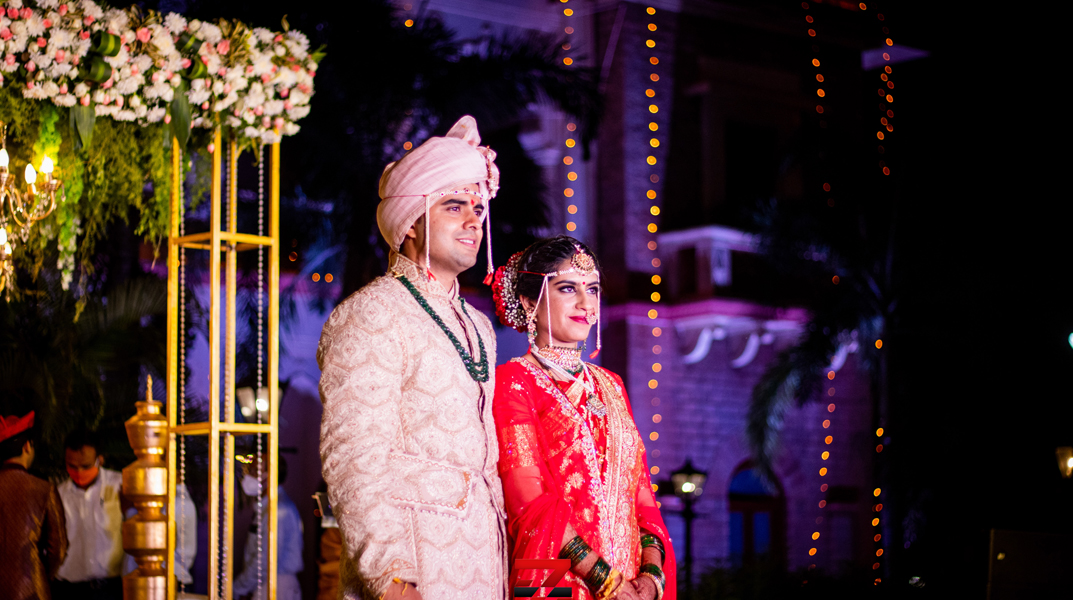17 UNIQUE INDIAN WEDDING TRADITIONS AND RITUALS
In India, marriage is not just a celebration – it is an extravagant festival like a beautiful combination of two souls. Marriage is a celebration of the union of two families and a lasting bond.
Indian weddings are so colorful that they have caught the attention of people all over the world. Mostly characterized by their great features, Indian weddings include multi-page invitations, large numbers of guests and a lavish dinner.
Every Indian wedding ceremony signifies something special and every ritual has a meaning behind it. Even in satire, each round represents a vow to be taken by the bride and groom.
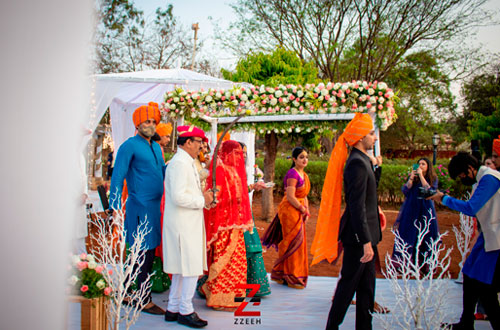
Whether it is dancing in music or barat, the breathtakingly beautiful mandapam, the elaborate attire, the excitement surrounding Joota Chupai, the intimate Mangal fairs or the emotional farewell- weddings are a scene full of energy, full of emotion.
Apart from the rituals that take place on the wedding day, there are many other rituals that are part of an Indian wedding and take place several days before the actual wedding.
Here is a list of some of the cultures and traditions that are part of Indian marriage:
-
1. The Muhurta is Decided – The First Thing is the First
-
2. The Groom’s Arrival Is a Celebration in Itself
-
3. Everyone Gives Performances in Sangeeth
-
4. Bride’s Hands and Feet Decorated with Henna
-
5. Haldi Celebration
-
6. The Wedding Mandap
-
7. Bride Grand Entry – Here Comes the Queen
-
8. Kanyadan and Hastamelap
-
9. Finally the Moment Arrived “Tying the Knot”
-
10. Couples exchange garlands during Jai Mala
-
11. Fires Broke Out in the Middle of the Porch(Saptasadi)
-
12. The Newlyweds Shower Each Other with Rice
-
13. Red Powder is Applied to the Bride’s Hair, Indicating that She is Married
-
14. Couple Sendoff is an Emotional Farewell Party
-
15. The Bride Enters the House
-
16. Sister-in-law Hide the Groom’s Shoes
-
17. Finally “ Reception Ceremony”
1. The Muhurta is Decided – The First Thing is the First
In Indian weddings, the wedding date and time play a vital role. For any event to take place, Hindus pre-determine the time and date, which is usually determined by an astrologer. An auspicious moment called Muhurtam.
All the hustle of weeding begins once maturity is established. Wedding venues are decided, guest lists are prepared, wedding dresses & jewelry shopping begins, wedding card designs are checked out and catering vendors take care of them. After the muhurta, all the family members were on their toes as a lot of work was going on at the big Indian wedding!
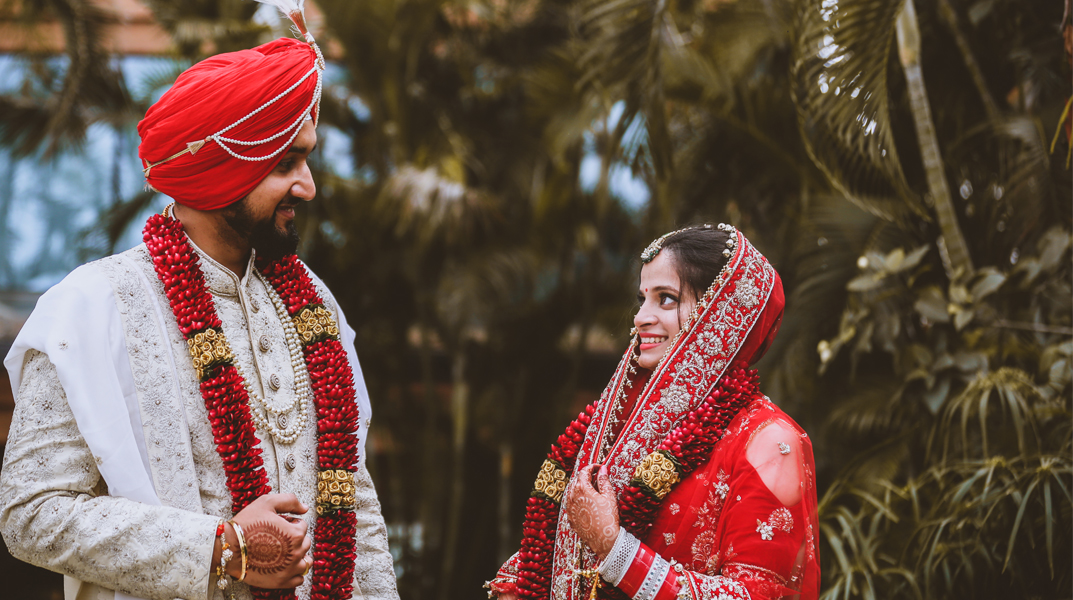
2. The Groom’s Arrival Is a Celebration in Itself
The arrival of the groom and his entourage at the place of celebration, depending on the region, is called Vara Yatra or Barat, which is celebrated with great joy. When the guests arrived, they parted ways with the bride and groom. When the groom’s guests enter his procession, the bride’s party is diverted to the meeting place.
As soon as it arrives, it means the groom’s guests will be diverted to join the ‘mini parade’ without going directly to the hall. Other sets of parents, family and friends greeted them amid live music and dancing. The party is greeted with a special rice toss called Akshat and the groom is presented with a lit lamp (or aarti) and a wreath-carrying plate. Sometimes a tilak, or even a drop on the forehead, is maintained.
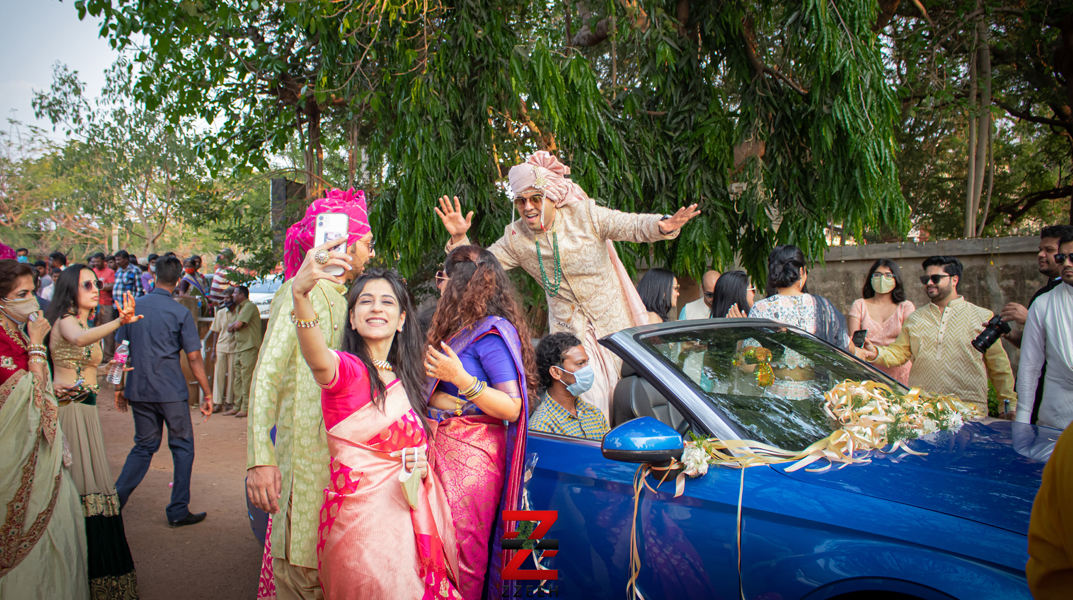
3. Everyone Gives Performances in Sangeeth
Before the actual wedding, there is a meeting called music or Sangeeth(depending on the regional background) where the family can sing, dance together and enjoy the joy of the upcoming reunion. Appropriately, that translates directly to “sung together”.
Each party in the family sings a traditional folk song to welcome the other and family members can also give full performances at the celebrations and cheeky competition.
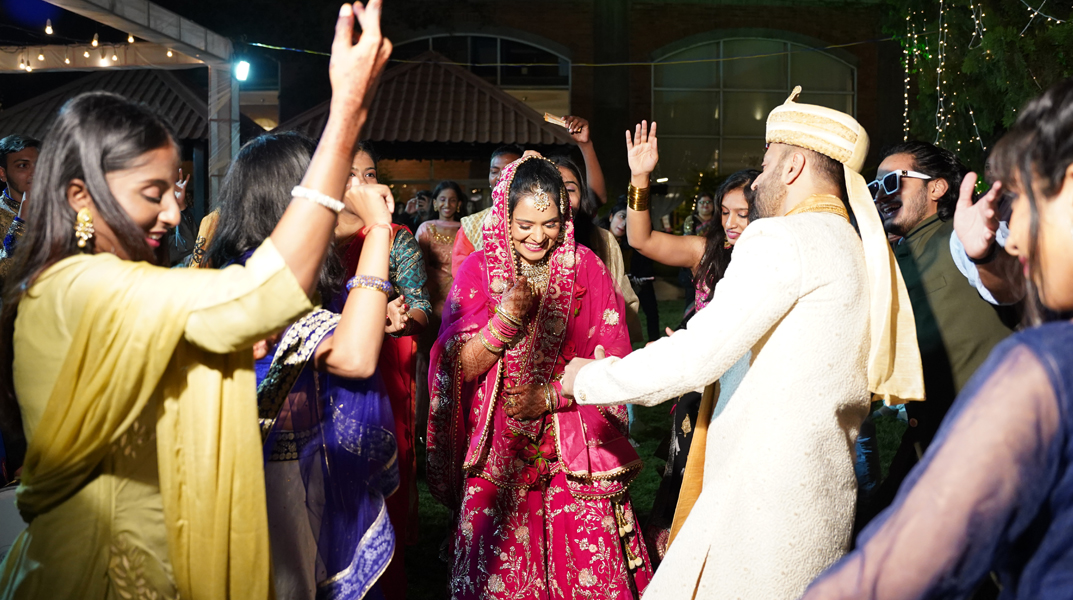
4. Bride’s Hands and Feet Decorated with Henna
The Mehndi ceremony, traditionally a large party attended only by the bride’s closest female friends and family members, initiates the wedding. The event usually takes place one day before the wedding (the day the music takes place), and the process can take hours. Although the designs usually reflect floral motifs, it is also common to hide the name of her partner in the artwork and see when they try to find it — the process is believed to reflect the patience of their marriage.
Many Indian beliefs focus on the meaning revealed by the color of the wedding henna. First, what I have learned from my family is that if the henna is darker, the mother-in-law will be less fond of her daughter-in-law and the marriage will be stronger or the husband will love the wife more.
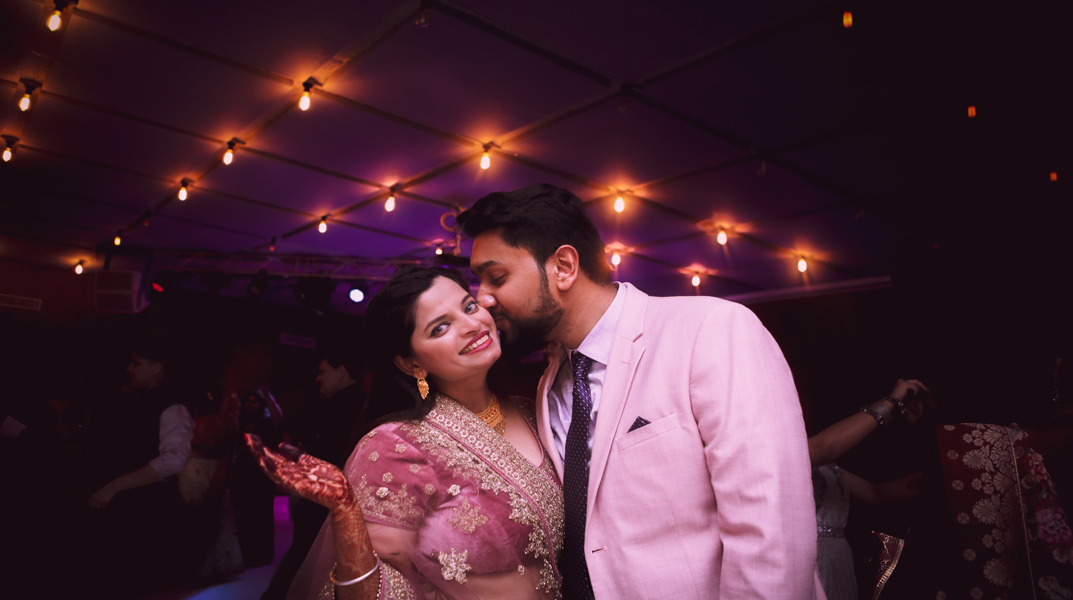
5. Haldi Celebration
Before the couple gets married, they go through a Haldi ceremony, where their families gather to pour oil, water and turmeric on the couple. The mixture goes everywhere and is believed to bless the couple. It has the double effect of moisturizing their skin before the wedding after that day.
The celebration also has a scientific meaning as Haldi has antiseptic and powerful healing power in Hinduism. Therefore, applying it on the face of the bride and groom will not only brighten the skin but also provide immunity and help in keeping away unwanted skin allergies.
Yellow for this ceremony and the bride wears a yellow suit or sari for her Haldi ceremony, which is considered very sacred.
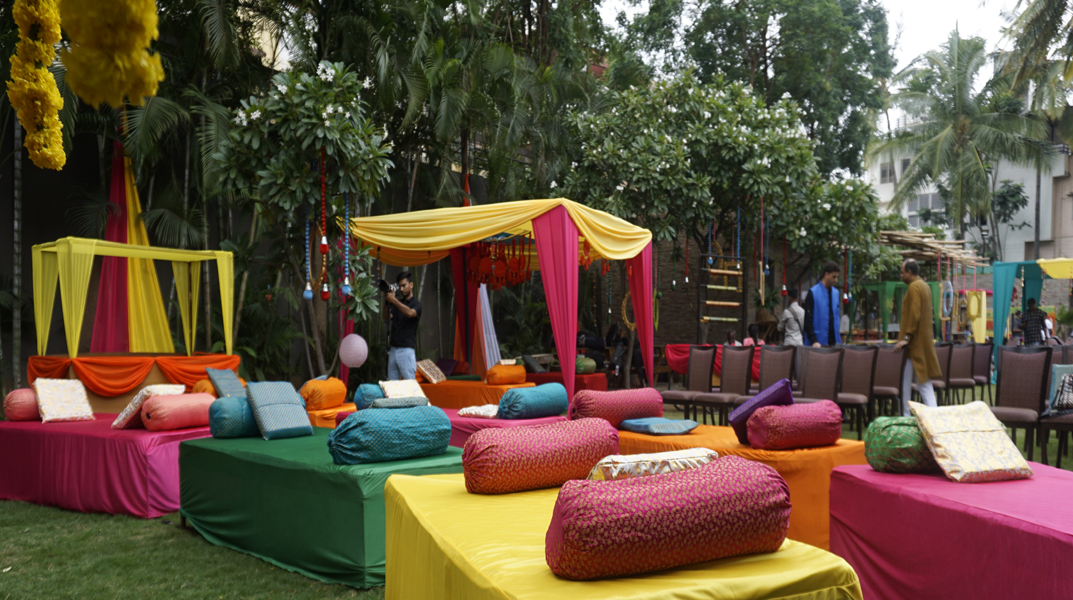
6. The Wedding Mandap
The Wedding Mandap can be kept indoors or outdoors. The porch will have a themed decoration of colorful flowers, fabric and curtains. Each of the 4 pillars means one of the four parents. The mother’s uncle leads the bride down the aisle as the bride’s father waits at the altar. Under the porch, a small sacred fire is lit and confined to a dish for safety. The god of fire is believed to sustain the ‘fire’ life and give life to the new marriage.
As a symbol of growth and prosperity, the mandapam is a sacred structure where Indian ceremonies are performed. Each pillar is believed to represent the couple’s parents who made the wedding happen with love, blessing and support.
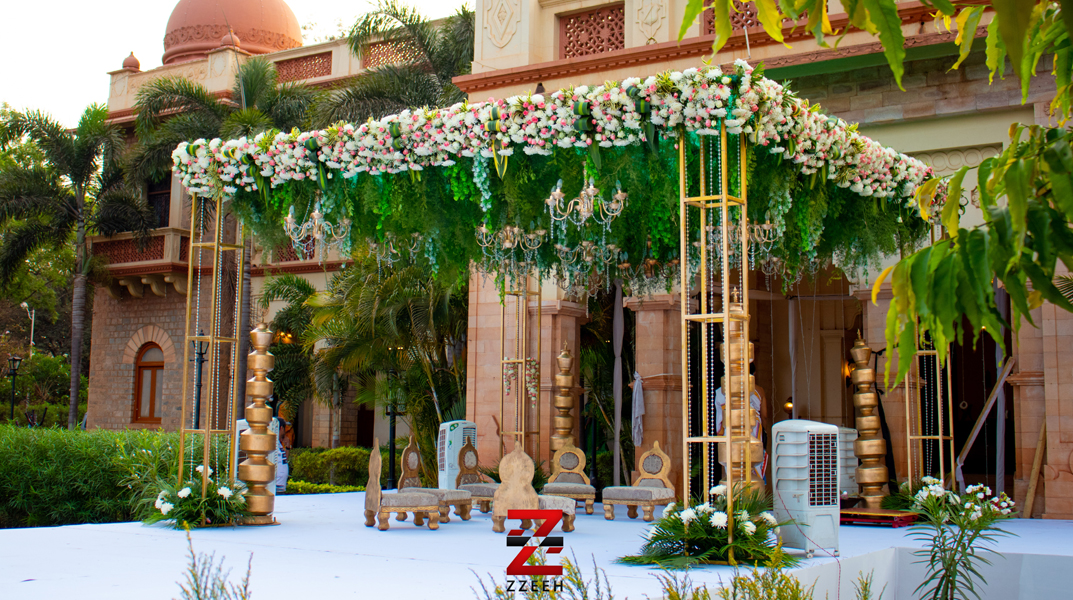
7. Bride Grand Entry – Here Comes the Queen
Once the groom arrives on the wedding stage, everyone is waiting for the grand entry of the brides! Usually accompanied by brides.
Kanya Agman is the Hindi phrase for “girl arrival”. During the wedding procession, the bride and groom often enter under the canopy. Beloved ones, often the bride’s aunt and uncle or perhaps the bride’s brothers, usually join in the procession.
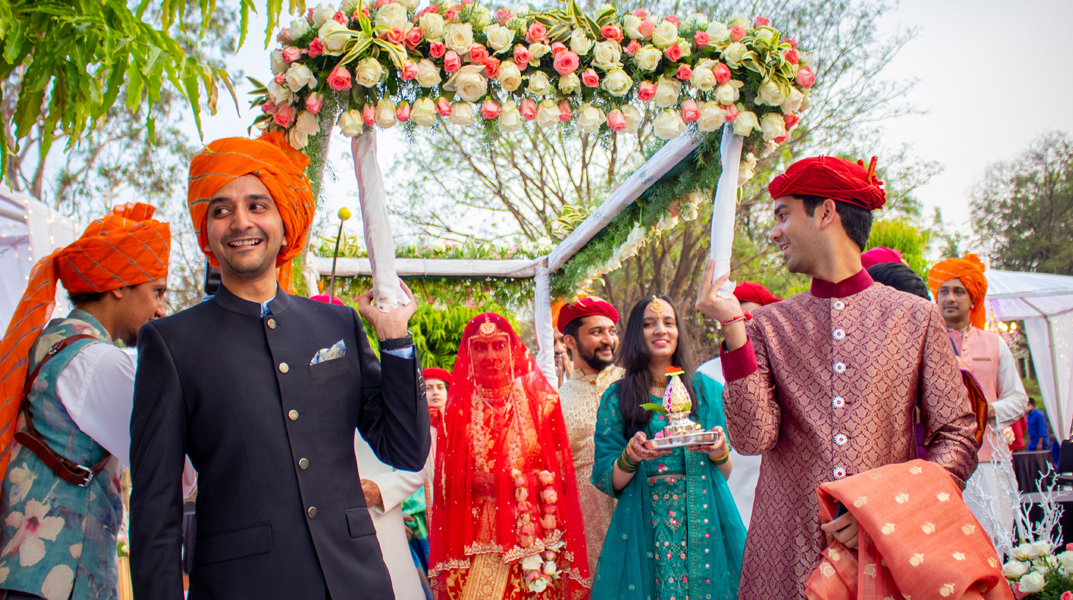
8. Kanyadan and Hastamelap
It refers to the couple’s request to enter into marriage as equal partners. At this time, the mother of the bride pours holy water on the hands of the couple.
This is the most important stage in a Hindu wedding, and a very emotional moment for the bride because her father presents her at a ceremony called Kanyadan.
In this ceremony, the bride is first taken to the mandapa by her brothers or uncles, after which her father places his daughter’s hand in the groom’s hand and ties the ends of their clothes as a gesture to her. It is considered a very sacred and solemn ritual.
They wash the feet of the bride and groom with milk and water, which together signifies being purified for new life. The bride then places her right hand on the groom’s right hand and ties their hands several times with cotton thread while the priest recites the holy verses. This indicates that their bond is now inseparable.
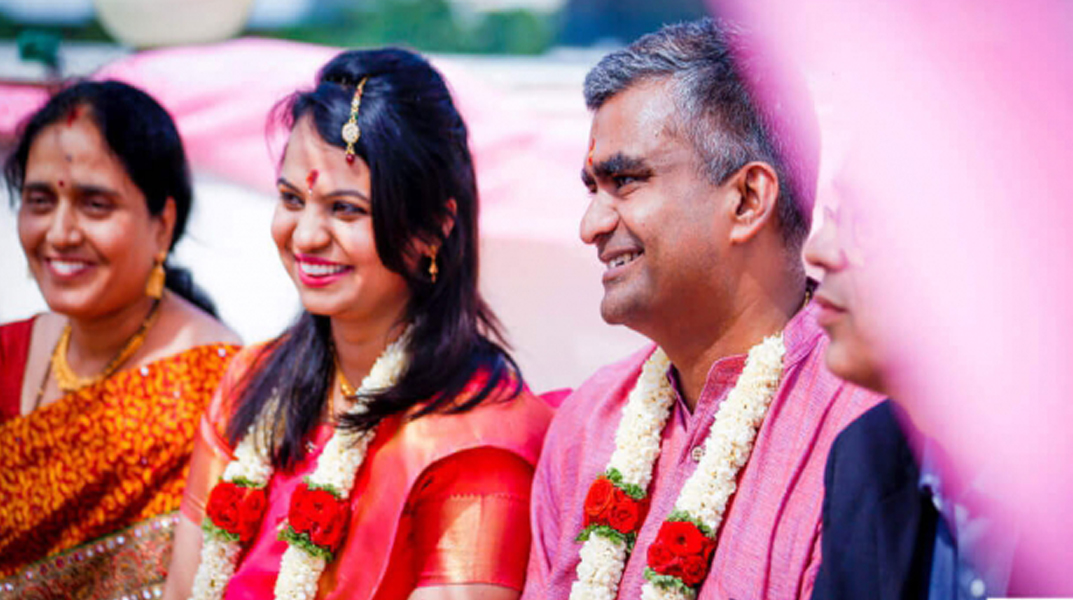
9. Finally the Moment Arrived “Tying the Knot”
In Hindu marriages, “knot building” takes on a literal meaning. The groom tied a “sacred thread” made of black, red and white beads, and tied a black or yellow string around the bride’s neck to mark her marriage. The bride continues to wear the mangalasutra even after the wedding day to indicate her marital status.
It is worn as a symbol of honor and symbolizes the promise that the couple will always be together. It shows people that you are married and should only be removed when the bride is a widow. “
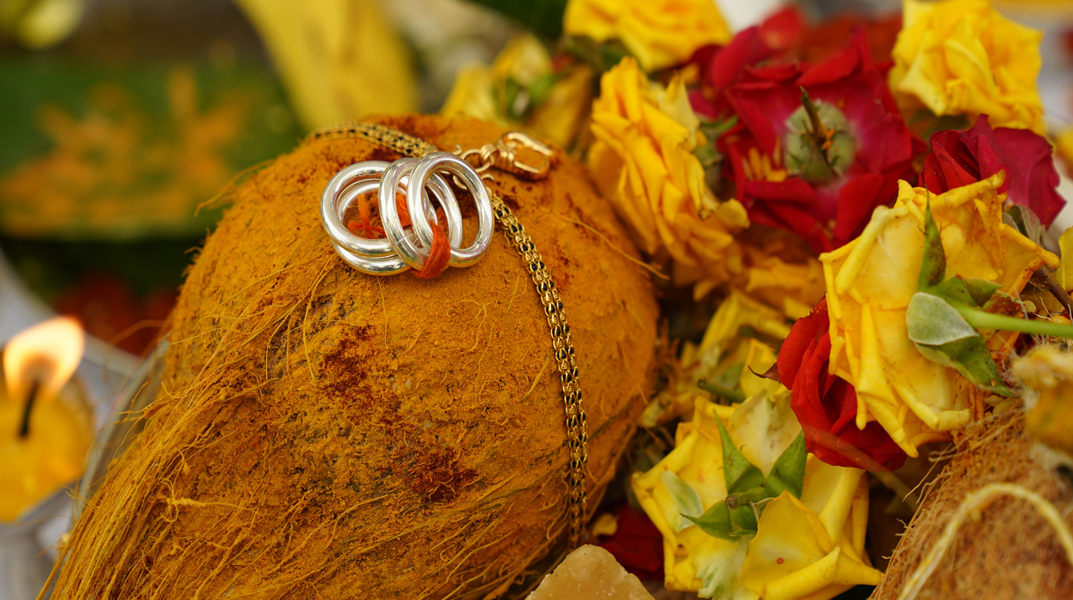
10. Couples Exchange Garlands During Jai Mala
Jai Mala is a garland of garlands exchanged between the newlyweds. For us Indians, Jai Mala means partners welcoming each other into their families. Without it, we would not consider marriage perfect.
Jayamala or Varmala is an Indian wedding ceremony and the first ceremony to be held in the presence of a large number of guests at the wedding venue. This happens after the bride arrives on stage with the groom walking with his sisters.
The bride and groom place wreaths around each other’s necks, followed by an extensive photo session and exchange of gifts at a contemporary wedding.
This celebration symbolizes the union of two souls, two families, values and customers. Before the other rituals of marriage begin, the Hindu priest prays to the nine planets, each of which blesses the couple to live a happy life together. This celebration is called Planetary Peace.
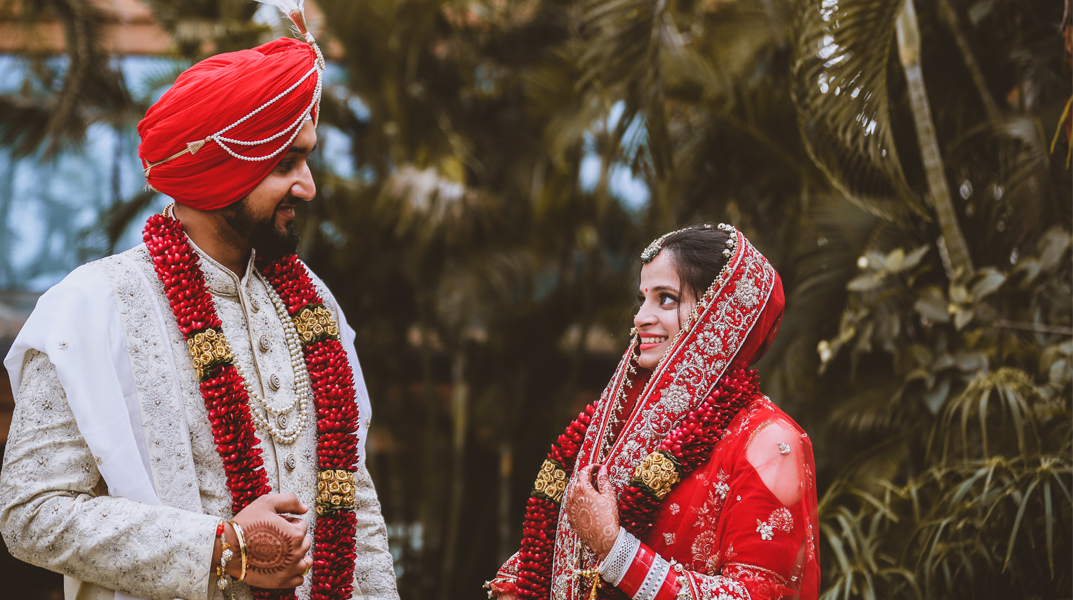
11. Fires Broke Out in the Middle of the Porch(Saptasadi)
Indian marriage is a celebration, not a contract. To indicate the feasibility of the ceremony, the fire is kept as a witness and offerings are made. The bride’s brother gives the bride three handfuls of lentil rice, wishing his sister a happy marriage. Each time the bride puts the rice on the fire as an offering. This offering is called home.
An Indian couple vows their vows around the fire, which serves as a witness to the ceremony. The bride and groom read the sacred Indian wedding vows and walk seven feet around the torch:
- With the first step, we provide and support each other.
- With the second step, we develop mental, physical and spiritual strength.
- The third step is to share worldly possessions.
- With the fourth step we get wisdom, happiness and peace.
- With the fifth step, we raise strong and virtuous children.
- With the sixth step we experience the fruits of all seasons.
- With the seventh step, we will always be friends and respect each other.
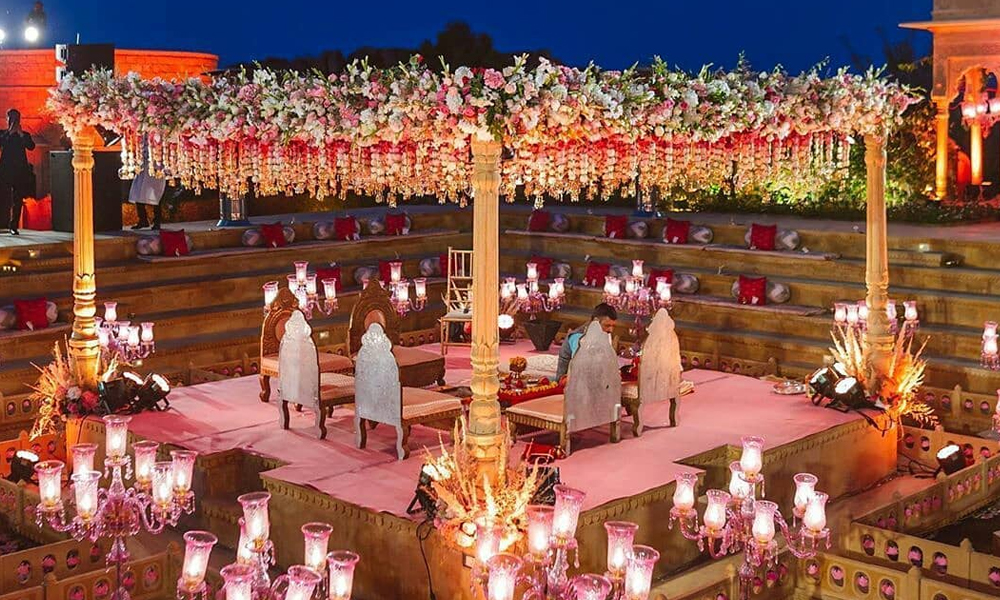
12. The Newlyweds Shower Each Other with Rice
In an Indian custom known as talambaras or ritual of happiness, couples bathe each other with a mixture of rice, turmeric, saffron and pearls. This tradition symbolizes fertility, well-being and happiness for the future life of the couple. It also provides refreshment and refreshment during more solemn celebrations. In some cases, members of either family join the ritual by encouraging the newlyweds or helping them physically.
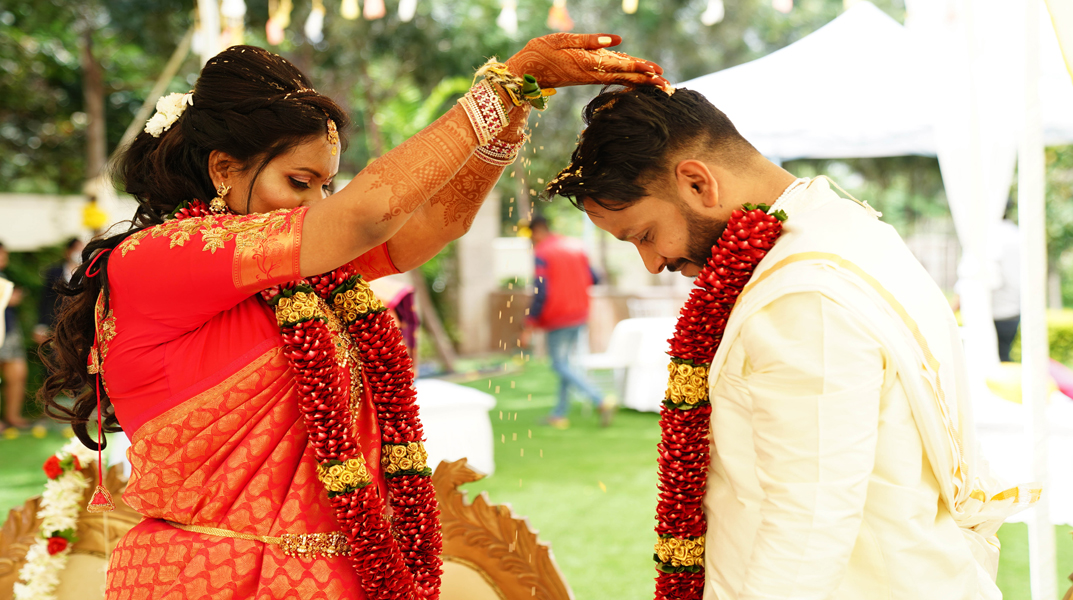
13. Red Powder is Applied to the Bride’s Hair, Indicating that She is Married
Sindoor, a red-orange powder, is applied to a piece of a woman’s hair, signifying her new status as a married woman after the ceremony is over. Traditionally, it is applied by her husband on the wedding day.
All married women, along with the bride, can wear powder as a symbol of their marital status. Some choose the shade over the entire length of the hairline, while others wear the dot on the forehead only based on personal tastes or regional customs.
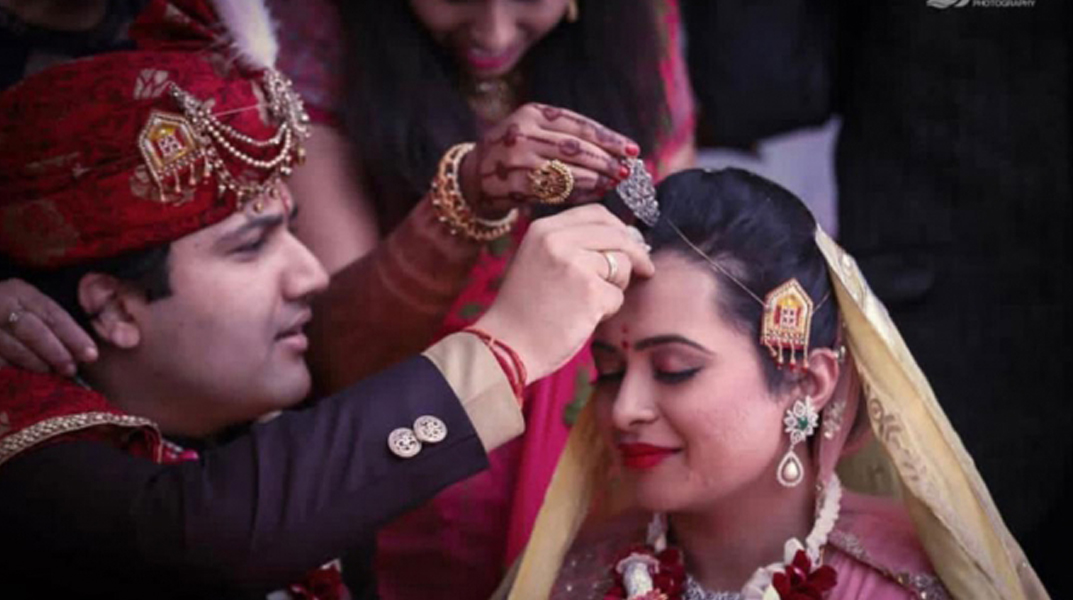
14. Couple Sendoff is an Emotional Farewell Party
The farewell of all brides does not end with sparks and smiles. When a Hindu bride officially leaves her home to start a new life with her spouse, the farewell ceremony is heartfelt and with tears in her eyes. . ” The farewell ceremony is the symbolic end of the wedding ceremony, and it is characterized by the bride’s parents giving a final goodbye to their daughter.
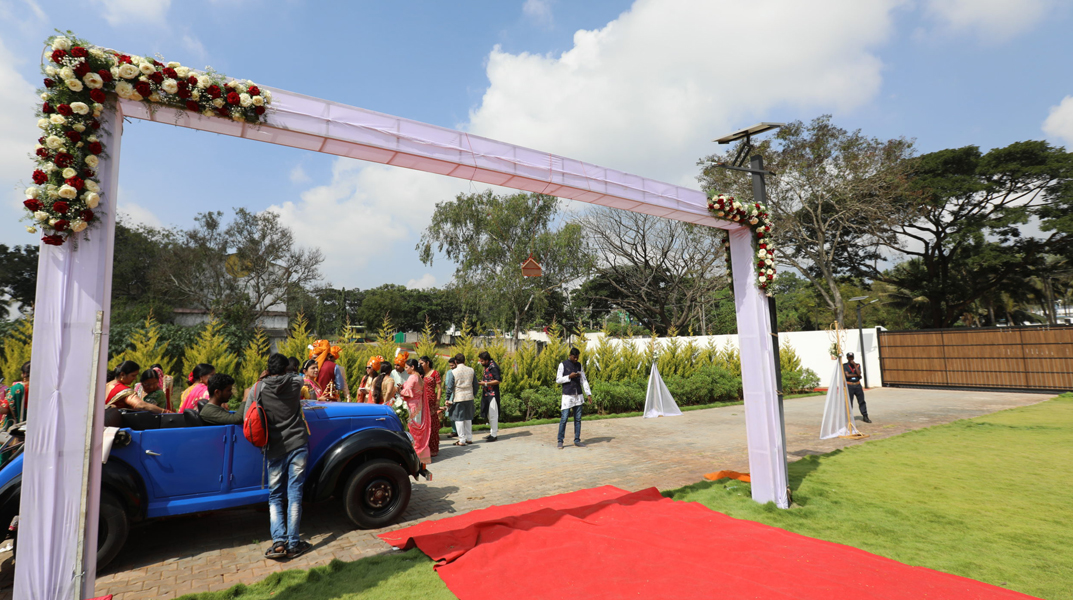
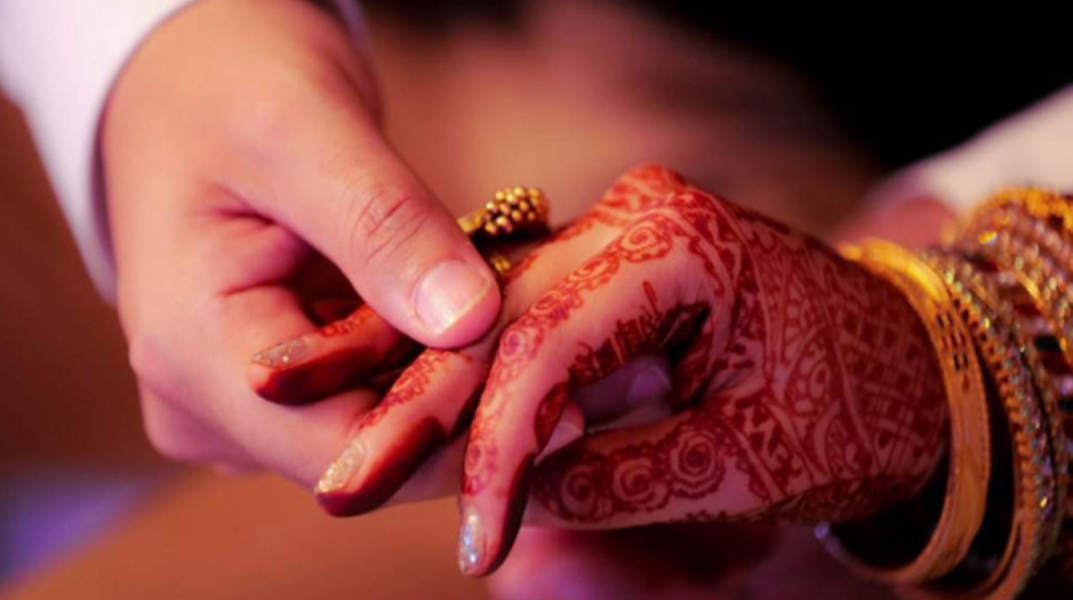
16. Sister-in-law Hide the Groom’s Shoes
The last tradition we do not mention in the rituals is Juta Chupai, where the bride steals the groom’s shoes! Before entering the porch, the bride and groom must unbutton their shoes. The groom’s siblings, relatives and friends try to protect his shoes, but the bride’s siblings, relatives and friends should go to the groom’s shoes and hide them safely somewhere.
At the end of the wedding, after the couple gets married and leaves Barat, the groom must “pay” towards the bride for his shoes. Indian wedding shoe stealing games has become a fun tradition!
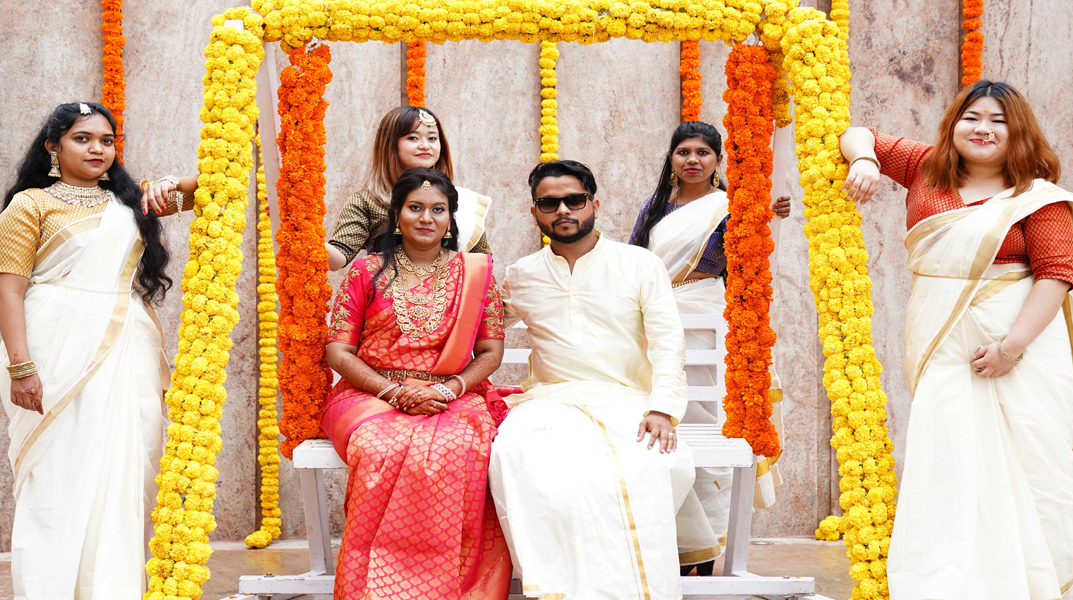
17. Reception Ceremony
It’s celebration time as both families are excited about their new contract. The reception ceremony also serves as an opportunity for the bride to get to know the acquaintances and companions of the groom’s family. It is time for the bride to finally represent the new family as an important member of her family. So receptions are arranged from the groom’s side to let the world know that there is a new member and they celebrate her arrival. It is an extension of the wedding ceremony.
